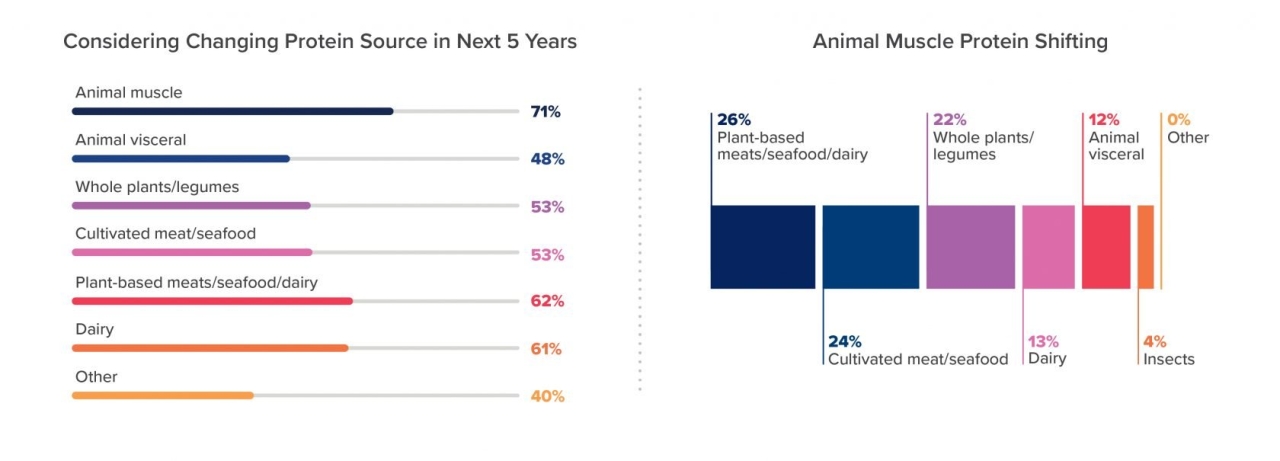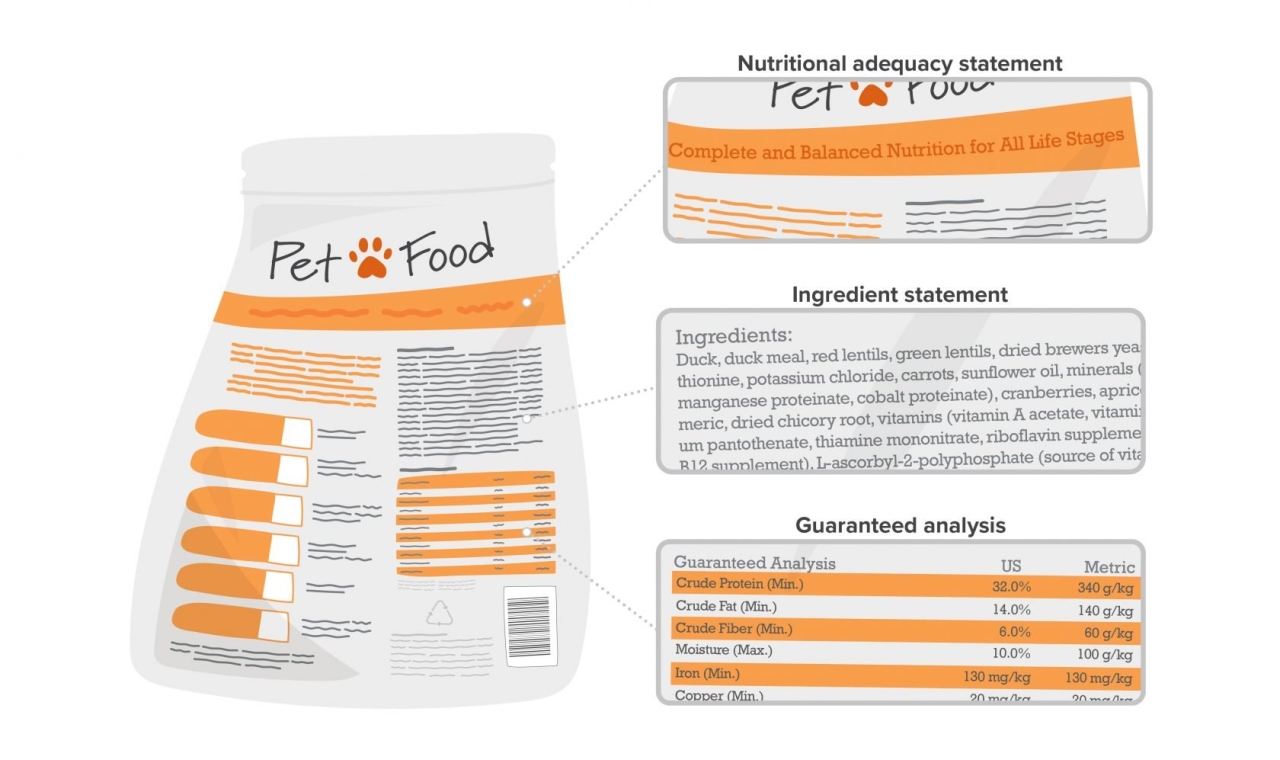Considering Plant-Based Pet Food Manufacturing? Keep These 3 Factors Top of Mind
By Tony Moses, PhD Fellow, Product Innovation
Published 12-16-22
Submitted by CRB

What do the contents of Fido’s dish and the output of a modern food research lab have in common? Plenty, if you ask innovators with their eye on the next big opportunity in pet food manufacturing.
Environmentally conscious, health-focused, flexitarian pet owners are looking for products that reflect their values. In fact, some industry research suggests that nearly three-quarters of surveyed pet owners are open to feeding plant-based proteins to their pets. Meanwhile, pet food manufacturers have their eye on this shift, and many are preparing to take advantage of it. When we surveyed more than 300 producers for our recent Horizons: Pet Food report, we found that 71% of manufacturers with animal-based whole muscle meat in their product formulation plan to shift to another protein source. Of those making this shift, 26% have their eye on plant-based meat, seafood, and dairy.

These two worlds—premium, values-driven pet food and plant-based proteins for human consumption—are heading for what may be the meat-cute of the century, and innovative manufacturers are getting in on it.
If you’re thinking of embracing plant-based pet food proteins in your own manufacturing operation, start by considering your ideal final product from three different angles, each of which ranked as “extremely important” to many respondents of our Horizons: Pet Food survey in terms of attracting and keeping customers.
- The final product’s appearance → 37% of respondents ranked this as extremely important
- The final product’s label → 48% of respondents ranked this as extremely important
- The final product’s nutritional profile → 52% of respondents ranked this as extremely important

By understanding how each of these variables could impact your supply chain strategy, your process, and your facility layout, you could spare yourself from unwelcome surprises down the road—and set yourself up for a flexible, financially resilient plant-based pet food manufacturing operation with an innovative product line.
A final presentation that meets consumer expectations
The way you incorporate plant-based pet food proteins will impact everything from your sourcing strategy to your packaging approach.
Will your plant-based protein appear as distinct particles, like chunks in a stew? Or will you present a blended meal, like a loaf-style canned product? The answer will shape your manufacturing and sourcing strategy, which in turn will have a big impact on what it costs to make your product—and what it costs consumers to buy it.
To achieve that ‘chunky’ appearance, you’ll need plant-based inclusions. Those will potentially cost more than incorporated powders, both from a raw materials perspective and in terms of your operational complexity. With careful analysis, though, you may decide that the extra cost is worth it, especially if you already have “chunky” products in the market. Even blue-sky innovators may choose to develop a plant-based product with meat-like particles, attracting consumers who value the ability to identify ingredients in the final product.
Whether you choose this route or you formulate a homogenized final product using plant-based powders, you need to work backwards from your vision of the final product to understand what it means for your facility and process design.

Powders vs. Particles: key considerations
Supply chain: The agricultural commodities market is facing significant capacity constraints as demand grows for plant-based proteins. Whether you’re sourcing powders or solid particles, you’ll be competing with big-name brands in the human food segment, which could mean long lead times from contract manufacturers, extended shipping delays, and higher costs.
Some forward-thinking pet food manufacturers are dealing with these supply risks by expanding their own production capacity. For example, rather than contracting to a third-party manufacturer for the particles you need to make your chunky plant-based dog food, what if you designed an upstream process to make them in-house? It would require greater capital investment, but it would minimize your vulnerability to market turbulence and free you to better control the cost and quality of your raw materials.
Cost of goods: When you source a plant-based protein powder, you’re accessing the raw material supply chain further upstream than when you source solid particles (which are typically processed from powders). That means you’ll likely pay less for powder than for particulates—an important consideration, especially once you scale to industrial volumes.
Storage: As a general rule of thumb, manufacturers should plan for a storage area that’s approximately twice as large as their processing space.
Even in a flexible, well-engineered facility that’s designed to get the most from every square foot, that’s a large area to accommodate. Now calculate the cost of frozen storage, which is the reality for most manufacturers who need plant-based inclusions. Like conventional meat-based products, those inclusions will quickly spoil outside of a temperature-controlled environment. In addition to raising your utility costs (or forcing you to pay for third-party cold storage and transportation), relying on temperature-sensitive inclusions will also introduce more complexity into your material handling process—another significant cost driver.
Plant-based protein powders, on the other hand, are typically shelf-stable. You can generally store them in ambient temperatures without impacting their quality, and you don’t need to design additional steps (such as a thawing process) into your production plan.
Handling: If you’re paying a premium to source plant-based inclusions and store them in a temperature-controlled environment, then you want to be certain that your downstream process won’t compromise them. You’ll likely need a gentle mixing and handling approach that won’t damage the color or texture of those inclusions. Such an approach tends to be slower and can require additional hands-on labor, making it more costly to scale.
Plant-based protein powders are a more resilient ingredient. Because the goal is typically uniform incorporation, you can turn to high-speed, automated equipment and vigorous mixing. With these options available, scaling your throughput is generally easier and more cost-effective.
Processing and packaging: The same considerations that impact your manufacturing process will play a role in your processing and packaging strategy too, particularly when it comes to the material properties of particulates versus powders.
Take canning, for example. Whether you’re manufacturing a blended product or a product featuring obvious inclusions, you need an FDA-compliant process designed to sterilize both the can and its contents. This high-pressure process, called retorting, typically involves heating canned food to an internal temperature that exceeds 120C, which can be hard on sensitive materials. Without careful planning and formulating, your particles may lose their texture, taste, color, or aroma, which could negatively impact palatability and mouthfeel. At that point, it won’t matter what your product looks like–if Fido won’t eat it, Fido’s owner won’t buy it.
Water content is another important consideration, especially for canned products undergoing the retorting process. Heat relies on the conducting properties of moisture to penetrate all the way to the center of the can. That means, for example, that your plant-based inclusions must be properly hydrated, which introduces more complexity. Will you expand your upstream process to accommodate a cooking step? Or will you pay more to source pre-cooked materials? Relying on plant-based powders to formulate a fully blended product will help you avoid many of these added costs and complexities.
A label that incentivizes buyers
Vegan, non-GMO, gluten-free: behind every claim lies a smart cleaning, storage and utilities strategy. Planning this strategy early could spare you from expensive future retrofits.
Once you have a product that looks the way you want it to and has an aroma, texture and mouthfeel that will appeal to pets, there’s another important factor to consider before you commit: What will you print on the label? How will you nudge consumers towards a purchase with product claims that are both validated and strategic?
It’s not enough to develop a formulation that’s free of a certain element (like meat, gluten, or grain). To substantiate those claims, you need a good understanding of modern hygienic design for pet food processing. Manufacturers with raw meat in their product portfolio know this strategy well: it’s all about removing the risk of cross-contamination from your process, ensuring that the claims you make on your label are valid from the moment you receive your raw ingredients to the moment a final product leaves your facility.
For pet food manufacturers juggling different ingredients, environmental conditions, and packaging solutions within the same facility, hygienic design is a must. Imagine manufacturing a plant-based, gluten-free product in a facility that uses wheat-based flour for other pet food formulations. Flour creates dust, and dust creates a high risk of cross-contamination. To manage that risk, you’ll either need a segregated production line or a thorough cleaning and turnover protocol. The former is a significant capital investment; the latter will limit your throughput.
You’ll also need to think about segregation during storage. For example, if a non-GMO claim is important to a product line, you’ll need to make sure that raw materials, as well as finished products, have dedicated storage areas. You’ll also need to look closely at the way operators move through your facility. Their gowns and outerwear may carry residue that could contaminate a product. To manage that risk, you may need to include additional changing areas in your facility’s layout.
And when you finally have things segregated, you’ll also need to think about personnel practices. The movement of people through a facility can increase the risk of cross contamination. Handling ingredients can lead to contamination of clothing and shoes. This may require your facility to have strategically placed hand wash stations, boot washes, and hygiene exchange areas, where employees can change into non-contaminated clothing. It may even require personnel to be dedicated to different areas of the plant, so they don’t mix ingredients or pathogens between lines.
Will a ‘premium’ status in the pet food aisle offset the cost of these measures? Many of the respondents in our Horizons: Pet Food industry survey are betting it will; in fact, 44% say that consumer demand for a premium product is driving them to change their packaging approach. But what goes into the package determines what’s printed on it, and this is where your upfront work to plan a hygienic facility and a process that’s aligned with your competitive strategy is key. The strength of that plan will either open or close your opportunity to include specific, ‘premium-level’ claims in your product label, which could have a significant impact on your market performance.
A product that’s nutritionally complete
Plant-based proteins alone won’t give pets the balanced diet they need. Filling that gap may mean expanding your supply chain, your manufacturing process, and your storage capacity.
In the U.S., pet food manufacturers need a certificate of analysis from the Association of American Feed Control Officials (AAFCO) in order to market their product as “complete and balanced,” or to claim that it performs a specific nutritional function, such as promoting weight loss. Manufacturers of conventional pet food products can rely on nutrient-rich, animal-based ingredients like liver, heart, and lungs to meet the AAFCO’s criteria, but what happens when you replace those ingredients with plant-based alternatives? In order to secure that AAFCO certificate and deliver the nutritious product that pet owners expect, you may need to supplement your formula with other sources of vitamins, minerals and fats. This could impact your label by adding more items to your ingredient list, some of which may not be easily recognizable by consumers.
Tweaking your recipe is only the first step. Before committing to a final formulation, look upstream at how that formulation will impact your operation. Handling supplemental fats and other ingredients is a more intricate undertaking than handling a single ingredient, like a block of frozen liver. Simulation technology can help you test various approaches, giving you visibility into your process while you still have the opportunity to make cost-effective changes. This will help you to develop a tailored approach that offers both a balanced formula for pets and a balanced return on your investment.
Manufacturers who solve this nutritional challenge by combining plant-based proteins with conventional meat inclusions face different challenges. Their ‘flexitarian’ product may appeal to a rapidly growing market segment, but getting that product from concept to commercial-scale production is tricky. For example, the plant-based protein powders you receive from suppliers have likely undergone the kill step (that is, any dangerous microbes they carry have been killed or otherwise removed), but the frozen meat arriving in your warehouse likely has not. Designing a process that safely handles these differentiated materials, combining them at the right point and in the right way to preserve product quality and safety, requires careful engineering.
To manufacture plant-based pet food, enlist engineering expertise
Whatever the industry, savvy manufacturers know that embracing a trend before it goes mainstream can be a big boon for business. But it has to be the right trend, and it has to involve a risk-based approach that’s flexible enough to adapt as new innovations emerge and robust enough to deliver quality into the hands of consumers—or, in this case, into the bellies of hungry pets.
Plant-based pet food may well fit that bill. It’s a promising market segment with a large and affluent consumer group behind it, and pet food manufacturers have a head start thanks to lessons learned in processing plant-based proteins at industrial volumes for human consumption. But making it all work together—the right presentation, with a label that makes the right claims, and the right nutritional balance—takes more than a good formulation. To make sure your manufacturing process and the facility that supports it are safe, efficient, and financially sustainable, start with an expert-led plan that’s tailored to fit your situation. Without it, you could be in for a ruff ride.

CRB
CRB
CRB is a leading global provider of sustainable engineering, architecture, construction, and consulting solutions to the life sciences and food and beverage industries. Our innovative ONEsolution™ service provides successful integrated project delivery for clients demanding high-quality solutions -- on time and on budget. Across 21 offices in North America and Europe, the company's nearly 1,800 employees provide world-class, technically preeminent solutions that drive success and positive change for clients and communities. See our work at crbgroup.com, and connect with us on social media here.
More from CRB

